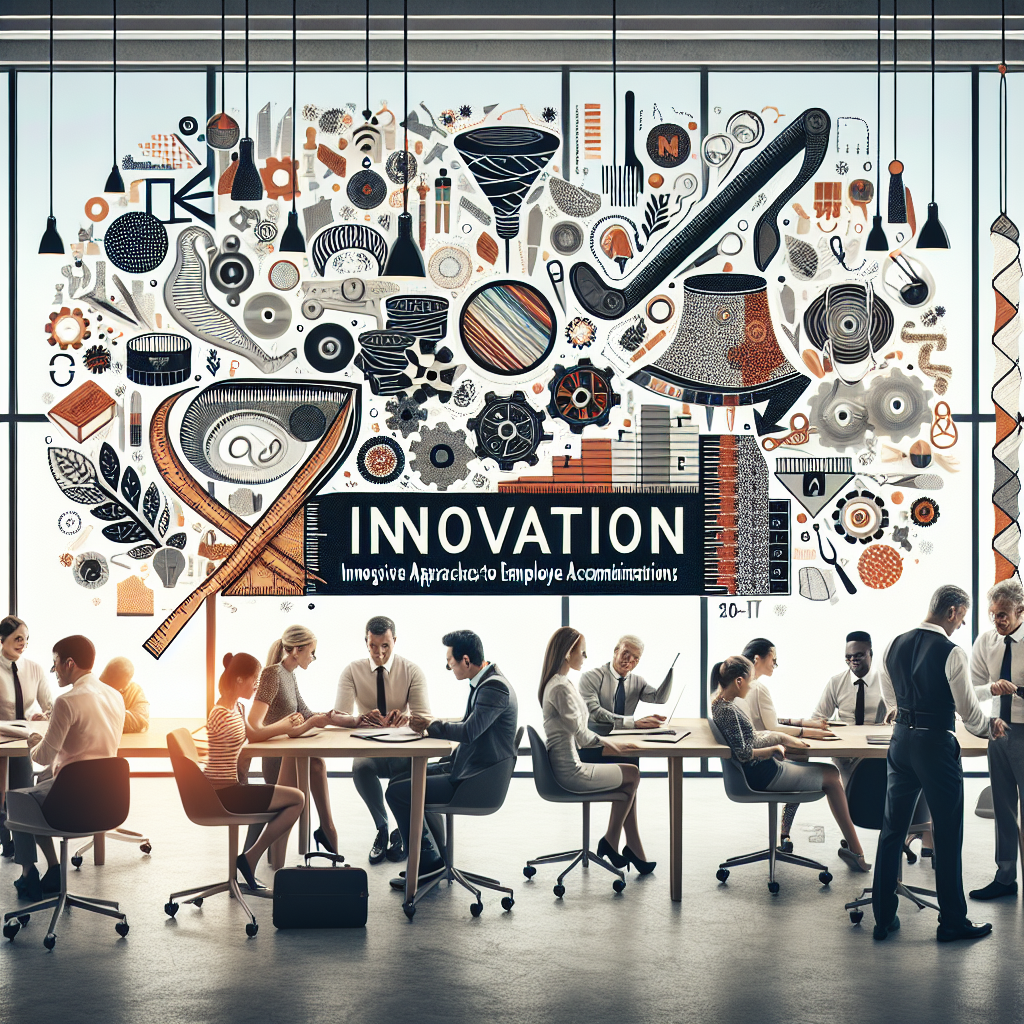Introduction
In today’s competitive workplace, the key to unlocking potential lies in flexibility and adaptability. Companies that prioritize employee accommodations are not only fostering inclusivity but are also recognizing the immense value of diverse talents. "Tailoring Success: Innovative Approaches to Employee Accommodations" captures the essence of how adaptive strategies can lead to thriving work cultures. As organizations pivot toward a future defined by agility and resilience, innovative approaches to employee accommodations become not just a benefit but an essential driver of success.
The Business Case for Employee Accommodations
Understanding Employee Accommodations
Employee accommodations refer to adjustments made in the workplace to assist employees with various needs—be they related to health, disabilities, or even changing life circumstances. These accommodations can range from ergonomic adjustments to flexible working hours or modified job responsibilities.
Why It Matters
The conversation around employee accommodations has evolved dramatically. A study by the Job Accommodation Network (JAN) revealed that 56% of accommodations cost nothing, while most others were reported to have minimal costs with a significant return on investment. Organizations that actively implement innovative approaches yield:
- Increased employee satisfaction
- Lower turnover rates
- Enhanced productivity and creativity
Case Study: Microsoft’s Inclusivity Revolution
Microsoft has been forefront in promoting innovative accommodations. Their Autism Hiring Program redefines employee accommodation by creating specific processes tailored for neurodiverse individuals. Employees are offered unique interview experiences that allow them to leverage their strengths in a comfortable environment, which results in increased job satisfaction and retention.
Analysis
This case illustrates that by focusing on the unique needs of diverse groups, companies can foster an environment that not only encourages diversity but also delivers significant business outcomes.
Innovative Approaches to Employee Accommodations
Customizable Workspace Arrangements
Modern offices are evolving into more than just workspaces—they are dynamic environments fostering creativity and collaboration. Customizable workspace arrangements can include adjustable desks, quiet zones, and collaborative areas, giving employees the autonomy to choose their optimal working conditions.
Table: Benefits of Customizable Workspaces
| Customizable Feature | Benefit |
|---|---|
| Adjustable desks | Accommodates various physical needs |
| Collaborative spaces | Fosters teamwork |
| Quiet zones | Reduces distractions |
Flexible Work Hours
Flexibility in working hours is one of the most effective accommodations. Companies implementing flexible schedules found that it enhances work-life balance, reduces stress, and improves job performance.
Case Study: Dell’s Flexible Work Policy
Dell’s commitment to flexible work arrangements resulted in over 70% of its workforce adopting a form of flexible working. Employees reported increased job satisfaction, and the company experienced a marked increase in productivity.
Analysis
Dell’s model exemplifies that accommodating diverse needs through flexible schedules can lead to a more engaged workforce.
Technology-Enabled Solutions
Utilizing technology to accommodate employees can lead to innovative solutions. For example, video conferencing tools can help remote employees stay connected and involved, while task management software helps streamline workflows for teams with varying capacities.
Implementing Assistive Technologies
Incorporating assistive technologies, such as screen readers or speech-to-text software, enables employees with disabilities to engage fully in their work.
Case Study: SAP’s Autism at Work Program
SAP has a dedicated program aimed at hiring individuals on the autism spectrum as software developers. By providing necessary technologies, training, and support, SAP has integrated a unique talent pool into their organization, demonstrating that innovative adaptations drive business success.
Analysis
By leveraging technology to cater to individual needs, SAP not only boosts productivity but also champions inclusivity, creating a corporate culture where everyone thrives.
Proactive Training and Education
Employee Awareness Programs
Proactive training on the importance of employee accommodations can help foster understanding and support within teams. Programs should include:
- Diversity and inclusion training
- Workshops on mental health awareness
- Sessions to highlight the benefits of diverse abilities
Cultivating a Supportive Culture
A culture that openly discusses and values accommodations promotes acceptance. Creating a safe space where employees can voice their needs without stigma is crucial.
Table: Elements of a Supportive Culture
| Element | Impact |
|---|---|
| Open communication | Nurtures trust and relationship |
| Leadership buy-in | Models commitment to inclusivity |
| Feedback mechanisms | Continuous improvement opportunities |
Legal Compliance and Ethical Considerations
Understanding Legal Requirements
Companies must navigate the complex landscape of legal obligations regarding accommodations. Adhering to laws like the Americans with Disabilities Act (ADA) ensures not just compliance but signals a commitment to inclusivity.
Best Practices for Ethical Accommodations
- Actively engage employees in their accommodation process.
- Regularly evaluate and update accommodation policies.
- Provide confidential channels for reporting concerns regarding accommodations.
Conclusion
“Tailoring Success: Innovative Approaches to Employee Accommodations” isn’t just about compliance or business metrics; it’s about cultivating a work environment where everyone can flourish. Embracing diversity through innovative accommodations leads to a more engaged, creative, and productive workforce. By taking actionable steps in fostering inclusivity, companies can ensure that every employee not only feels valued but is empowered to contribute at their highest potential.
Call to Action
As we step into a new era in the workplace, it’s time to advocate for innovative accommodations. Whether you’re a leader in HR or an employee championing change, consider how you can personally contribute to fostering an environment of flexibility, diversity, and tailored success.
FAQs
1. What are common employee accommodations?
Common accommodations include modified workstations, flexible schedules, assistive technologies, job restructuring, and more.
2. How do I start implementing accommodations in my workplace?
Begin by assessing your workforce’s needs. Engage employees in conversations about their requirements and ensure leadership is supportive of accommodations.
3. Do accommodations need to be expensive?
Not necessarily. Many effective accommodations are cost-free or require minimal investment, often yielding significant benefits.
4. How can technology assist in accommodating employees?
Technology can provide solutions like communication tools and assistive devices to facilitate better engagement, productivity, and inclusion.
5. What is the business impact of proper accommodations?
Proper accommodations lead to increased employee satisfaction, lower turnover rates, and higher productivity, ultimately benefiting the entire organization.

